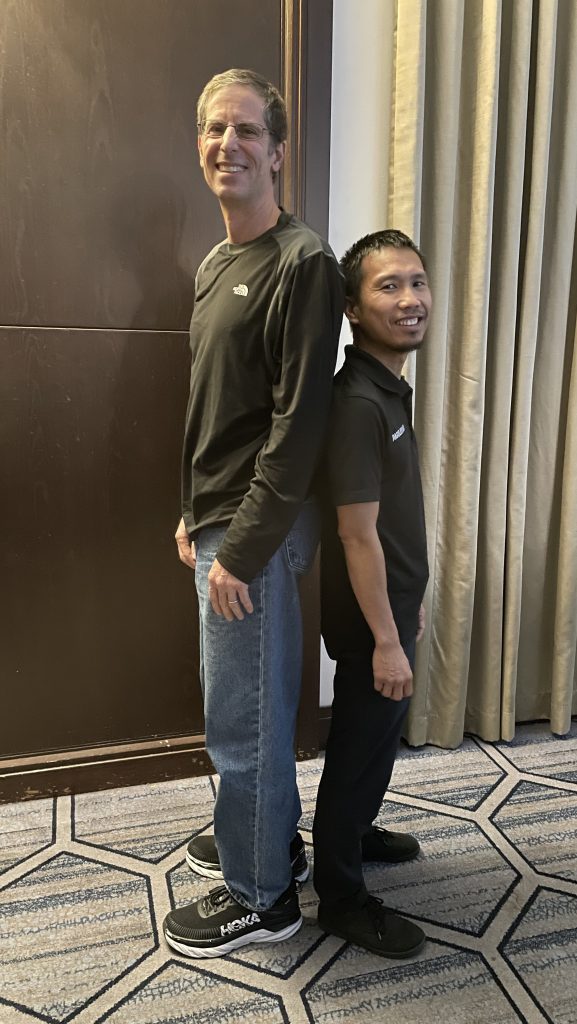What are the recommended “best practices” for the stance?
Generally recommended “best practices” for the stance can be found here:
fundamentals “best practices” check-sheet
The stance can be a very individual thing. You need to do what works best for you. The important aspects are stability, good and consistent alignment, stroke clearance, and comfort. The ideal feet placement, body position, knee bend, head height, and other stance mechanics issues can vary a lot from one person to the next based on the person’s height, flexibility, body shape and anatomy, comfort level, and any physical issues. As with most stance, grip, and bridge related issues, individual comfort is a primary consideration. The main purpose for the stance is to create a consistent and comfortable body position and visual alignment that allows accurate aim and a straight, consistent, and repeatable stroke. If your stance does this, then it is a good stance.
A good pre-shot routine can also be an important consideration involving stance and visual alignment.
For a good demonstration of general stance recommendations, see the following video from Vol. I of the Billiard University (BU) Instructional video series:
More good stance advice can be found in sections 1, 3, 4, and 9 here:
The following videos that covers the “textbook” or “orthodox” pool and snooker stances and offers advice and techniques to help you find your perfect stance as an individual:
For more information, see: “Finding Your Perfect Stance” (BD, November, 2019).
This video deals with the details of how to approach your stance:
For more info, see: Pre-Stance Routine (BD, August, 2020).
Why don’t pro players crouch with knee bend like you (Dr. Dave)?
The last two videos above explain why I crouch with knee bend in his stance. An alternative to bending at the waist or knees to get the head lower in the stance is to widen the feet. For tall people like Dr. Dave, bending at the waist can cause a lot of hamstring, neck and back strain. Widening the feet is a good alternative since it might allow you to keep one or both of your knees locked, which can help stabilize the stance. I have personally experimented a lot with different combinations of widening the feet and bending at the knees, and my best solution was to widen the feet just a little and mostly bend at the knees. My stance is stable, and I have no discomfort whatsoever. When I widen the feet more, to reduce the knee bend, I feel strain and discomfort in my right hamstring and/or ankle. The large knee bend might not be the best approach for all tall people since it does require quadriceps strength and endurance. Also, bent knees are not as stable as a locked knee. Each individual needs to experiment with the stance to determine the most effective and most comfortable way to create proper “vision center” alignment with the head as low as possible. The solution will be different for everybody, especially with tall people.
Most pro pool players are very short, so there is no need for a wide or crouching stance; however, some do it. Shane VanBoening, one of the greatest American players of all time, crouches with bent knees and he isn’t even very tall; although, he towers over many other players. I am much taller than SVB (middle in left photo), but not quite as tall as Mike Massey (left in left photo), who uses a classic upright stance. And the top of Alex Pagulayan’s head (right photo) is below my shoulder, and he is a longtime world-class player and champion.


There are many advantages to getting the head as low as possible, so if crouching with knee bend helps you do that with less neck, back, and hamstring pain or discomfort, then it is a good thing.
Is it important that your upper arm and shoulder be in the plane of the cue and your forearm?
It is generally recommended that everything (cue, forearm, upper arm, shoulder, vision center) be in the vertical plane through the cue, but doing so can cause neck strain and can make it difficult to get one’s face square and eyes level with the vision center in the right place (which is much more important). As long as you keep your upper arm and shoulder joint still during the stroke into the ball (see pendulum stroke), they have little effect on the straight motion of the cue, assuming the forearm is in the vertical plane of the cue hanging straight down. This is discussed and demonstrated here:
How important is it to have the face square to the shot with the eyes level?
There are advantages to having your face as square as possible with the eyes as level as possible, but one can learn to master any head orientation, assuming the vision center is properly and consistently aligned. For more information, see Diagram 4 and the surrounding discussion here: “Aim, Align, Sight – Part II: Visual Alignment” (BD, July, 2011).
Dr. Dave keeps this site commercial free, with no ads. If you appreciate the free resources, please consider making a one-time or monthly donation to show your support:
